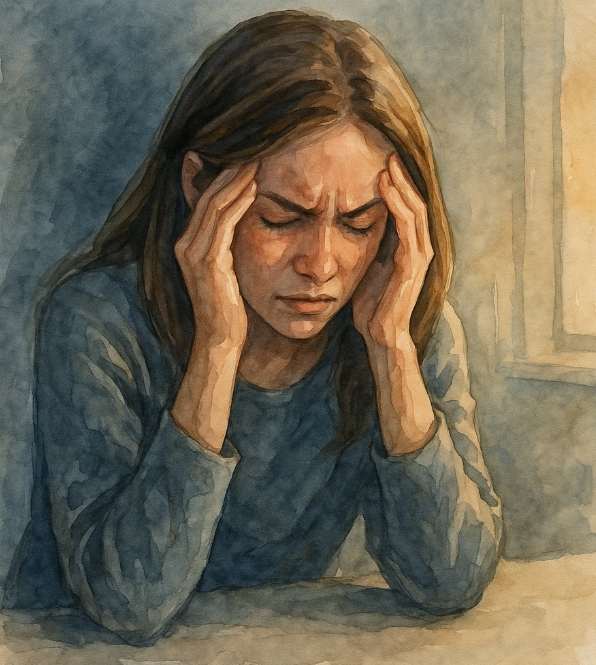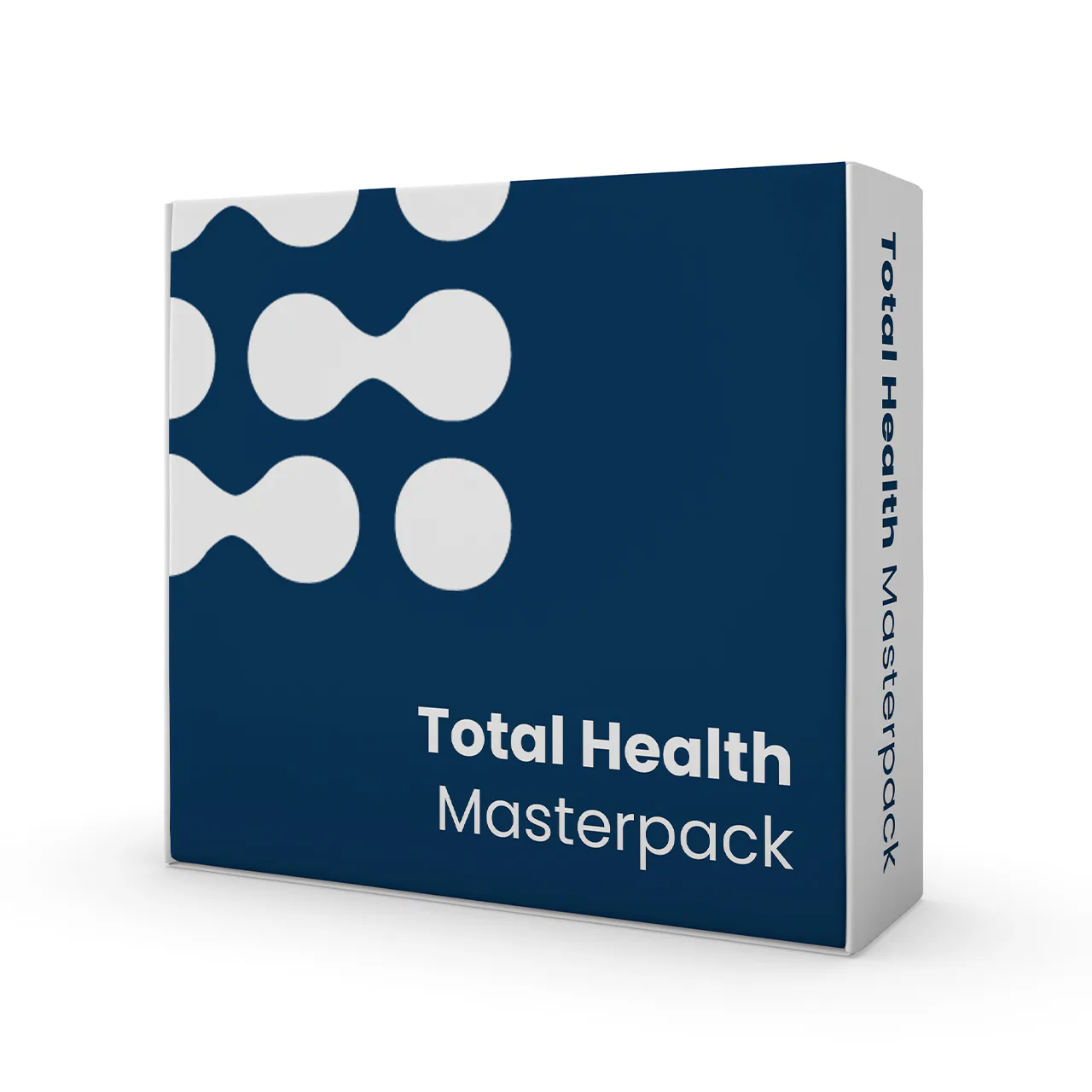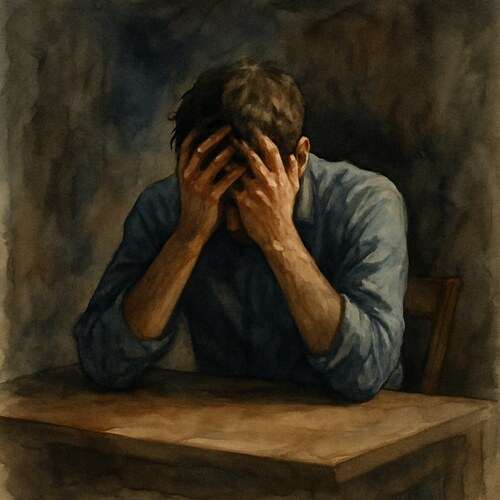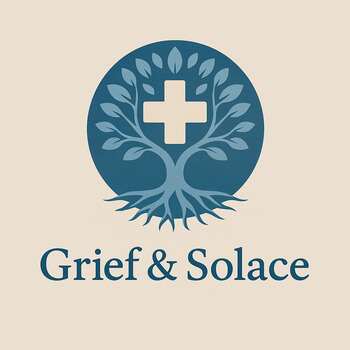Grieving Chronic Headaches: When Pain Becomes a Permanent Houseguest
Grief around chronic migraine builds over time, watching someone you love lose their days to darkness, silence, and the pain no one else can see.

This post blends real grief with grounded knowledge. It isn’t clinical. It isn’t distant. It’s meant to sit beside you—not above you. The story you’ll read is meant to reflect what so many feel when living through or witnessing this condition: confusion, exhaustion, and quiet forms of courage.
If what you read feels familiar, please speak with your doctor. Your pain deserves more than silence.
She Learned to Smile Through the Static in Her Skull
It wasn’t always sharp… The pain didn’t scream for attention, but it was persistent, weaving its way into her daily life. A constant hum lingered behind her eyes, much like a fluorescent light that refused to dim. It made her squint and led to canceled plans, stealthily eroding the person she once was.
🧠 Symptoms:
- Persistent head pain occurring 15 or more days per month for at least three months
- Pain may be pressing or tightening, often affecting both sides of the head
- Sensitivity to light or sound, nausea, or vomiting may accompany the headache
- Difficulty concentrating and irritability are common
- Sleep disturbances and fatigue may result from ongoing discomfort
At first, people overlooked it. She became adept at concealing her discomfort, maintaining her smile, engaging in conversations, and sending emails on time. However, beneath the surface lay a pressure that felt like an invisible tourniquet tightly wound around her temples, unrelenting and steady.
Her bag contained Advil, her desk held Tylenol, and her glove box had Excedrin. She was aware of her limits and the risk of rebound pain. Yet, on rare occasions when the fog lifted for a few precious hours, it was worth the gamble, until it wasn’t. When the medications ceased to work, the withdrawal headaches hit harder than the initial pain had ever managed.
Complications:
- Reduced quality of life due to constant pain
- Impaired daily functioning, affecting work and social activities
- Medication overuse headaches from frequent use of pain relievers
- Emotional issues, including depression and anxiety, stemming from chronic pain
In time, she found a neurologist who truly listened, not merely heard, but understood. There were no promises of a cure, but they offered her a plan, a team, and a glimmer of hope. It wasn’t magic that happened overnight; it was a gradual ascent out of the fog, one small step at a time.
Bad days still come, when she lies staring at ceilings, urging her eyes to cease their throbbing. But now, the pain doesn’t define her. She isn’t free, but she is resolute in her fight. She has learned to rest without feeling guilty, to advocate for herself without apology, and to smile even when her mind suggests otherwise.
Pain taught her how to hide…but healing taught her how to return.
Causes:
- Chronic migraines or tension-type headaches evolving into daily patterns
- Medication overuse, particularly pain relievers taken frequently
- Traumatic brain injuries or infections affecting the central nervous system
- Inflammation or other problems with blood vessels in and around the brain
- Brain tumors or increased pressure within the skull
Doctors listened with sympathetic nods. They recommended hydration, exercise, and sleep hygiene. She found herself wanting to laugh; how could anyone suggest sleep when her skull felt like a dying star, and her mind incessantly replayed her failures? She wasn’t lazy; she was utterly exhausted, fatigued in a manner only pain could conjure: deep, pervasive, and spiritually silent.
As time passed, her mental health began to wear down. It wasn’t due to drama or a breakdown, but from a gradual erosion, much like rain weathering stone. Confidence, hope, and even joy dulled around the edges, leaving behind a soft ache of loss.
Eventually, she stopped explaining her condition to others. They didn’t grasp the reality. They’d say, “You look fine,” or inquire, “Still?” or suggest yoga. Each word grazed against her like sandpaper…not out of malice, but from a lack of understanding. They couldn’t witness the quiet battle she fought daily, alone.
Risk Factors:
- Female sex: Women are more prone to chronic daily headaches
- Anxiety and depression: Mental health conditions can contribute to headache frequency
- Sleep disorders: Poor sleep quality or conditions like sleep apnea
- Obesity: Higher body weight may increase risk
- High caffeine intake: Excessive consumption can lead to rebound headaches
📘 Diagnosis & Treatment
Diagnosing chronic daily headaches involves a thorough medical history and physical examination. Imaging tests like MRI or CT scans may be used to rule out underlying conditions.
Treatment strategies include:
Preventive medications:
- Antidepressants: Such as amitriptyline to reduce headache frequency
- Beta-blockers: Like propranolol to prevent migraines
- Anti-seizure drugs: Including topiramate for migraine prevention
- Botulinum toxin injections: May help reduce chronic migraine frequency
Lifestyle modifications:
- Regular physical activity to reduce stress
- Adequate sleep and maintaining a consistent sleep schedule
- Stress management techniques: Such as yoga, meditation, or cognitive behavioral therapy
- Limiting caffeine and avoiding overuse of pain medications
Alternative therapies:
- Biofeedback: To control physiological functions and reduce pain
- Acupuncture: May provide relief for some individuals
- Massage therapy: To alleviate muscle tension contributing to headaches
- It’s essential to work closely with a healthcare provider to develop a personalized treatment plan, as chronic daily headaches can be challenging to manage and may require a combination of therapies.
I know this is heavy, and I understand that the road ahead may feel like a tangle of loss and unanswered questions. But please hear this: you are not broken because you are hurting; you are not weak because you are afraid. You are living through something real, and survival itself is a kind of grace. You are allowed to struggle, you are allowed to hope, and you are allowed to not have all the answers today. Whatever comes next, you do not face it empty-handed; you carry every moment of love that shaped you, and that will always be enough to keep going.
🎀 Gifts to help With Chronic Migraine
🏥 Everyday Comforts for Everyday Battles
Managing Chronic Migraine often means needing a little extra help.
Sometimes it’s about restoring dignity, ease, or simply getting through the day with less pain.
These carefully chosen tools aren’t just items; they’re small bridges back to living.
This section is about finding practical support, never shame.
XL Flax Heating Pad – Daily Neck Relief for Unrelenting Headaches
Chronic daily headaches often begin in the neck, where tension builds until it echoes through the skull. This extra-long flax heating pad delivers targeted warmth to the base of the head and shoulders—helping release tight muscles, reduce pressure, and offer a moment of peace in a body that never gets quiet. Designed for daily use. Built for the kind of pain that never fully stops.
🌿 Paths to Healing Beyond the Map
Sometimes traditional medicine isn’t enough.
If you’re exploring gentle, alternative options to help with Chronic Migraine,
you might find comfort in plant-based compounds like **CBD or CBG**.
*This section is not medical advice, just a door left open.*
USA Medical Total Support Pack – Head-to-Toe Calm for Headaches That Never Clock Out
These aren’t migraines. They’re not flares. They’re just… always there. The Total Support Pack offers a gentle blend of CBD, stress relief, brain support, and sleep aids to address the layered causes of chronic headaches. It doesn’t erase the pain, but it gives your nervous system a better shot at stability, clarity, and quiet. For when you’re tired of explaining that yes, it still hurts.
Need a Different Path Forward?
Every journey through grief looks different. Choose the next step that speaks to where you are now:
When You're Ready to Start Healing
Healing doesn’t mean forgetting.
It means finding small ways to carry your grief with strength and grace.
These are the stories, tools, and gentle steps to begin walking forward…at your own pace.
When You're Still in the Thick of It
Sometimes healing feels like a lie.
If you’re not ready to move on…if the pain still roars louder than the world wants to hear…this is the place where you’re allowed to feel it.
No sugarcoating. No pretending. Just truth.
When You're Holding on to Who’s Still Here
Grief reminds us to love louder.
If someone you love is still with you, this is your place to celebrate them, honor them, and create new memories while there’s still time.
Joy and sorrow can live side by side.






